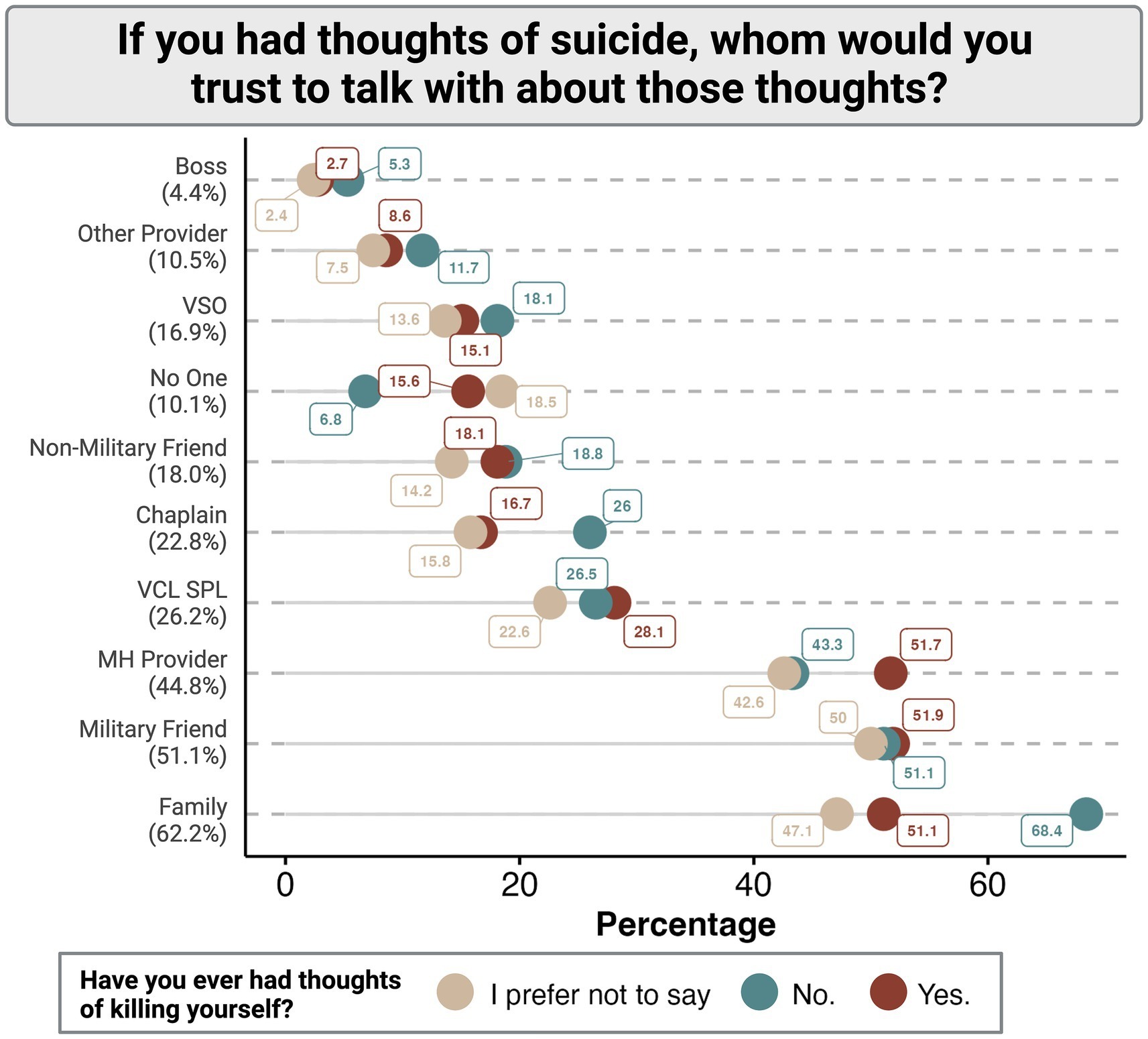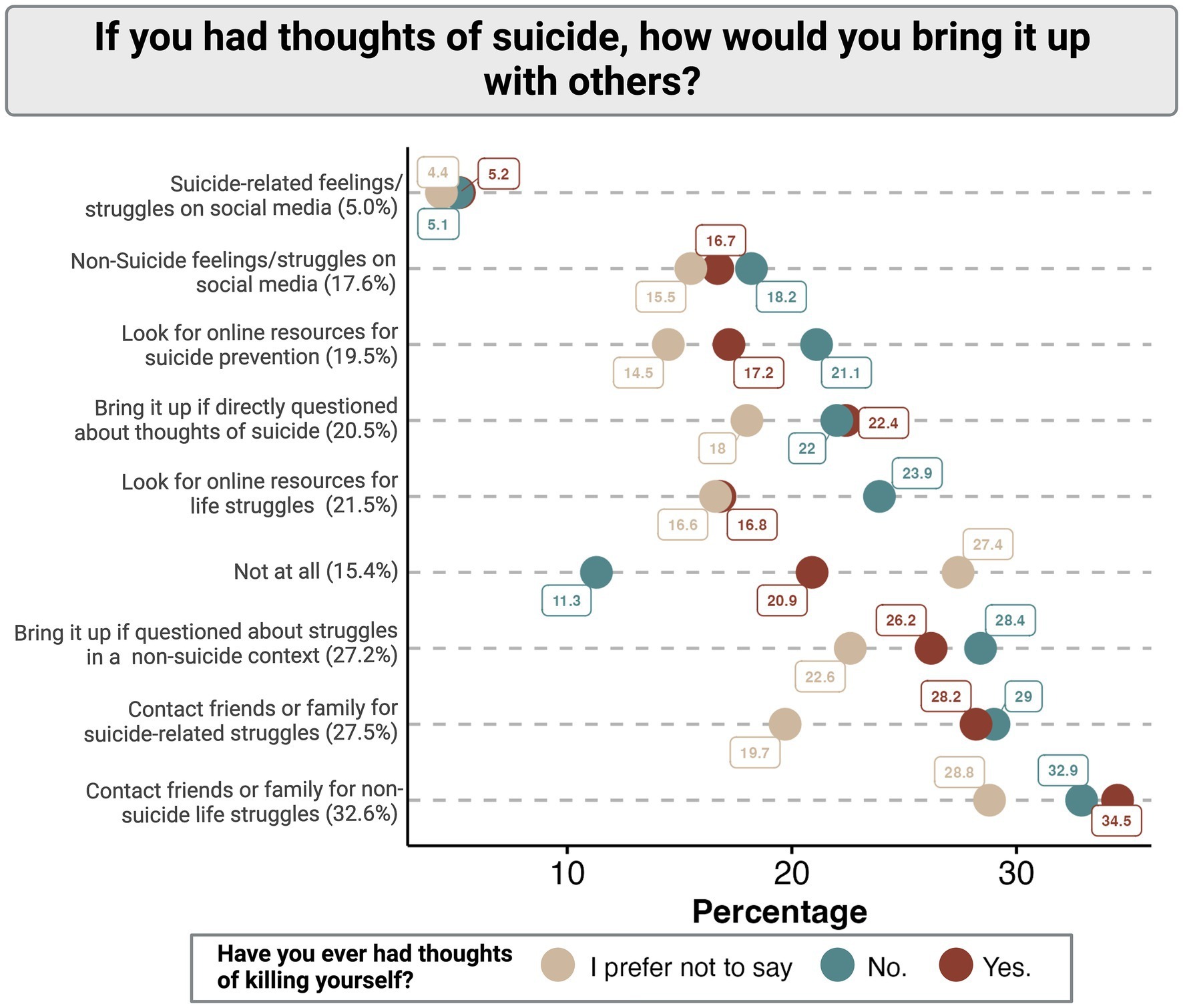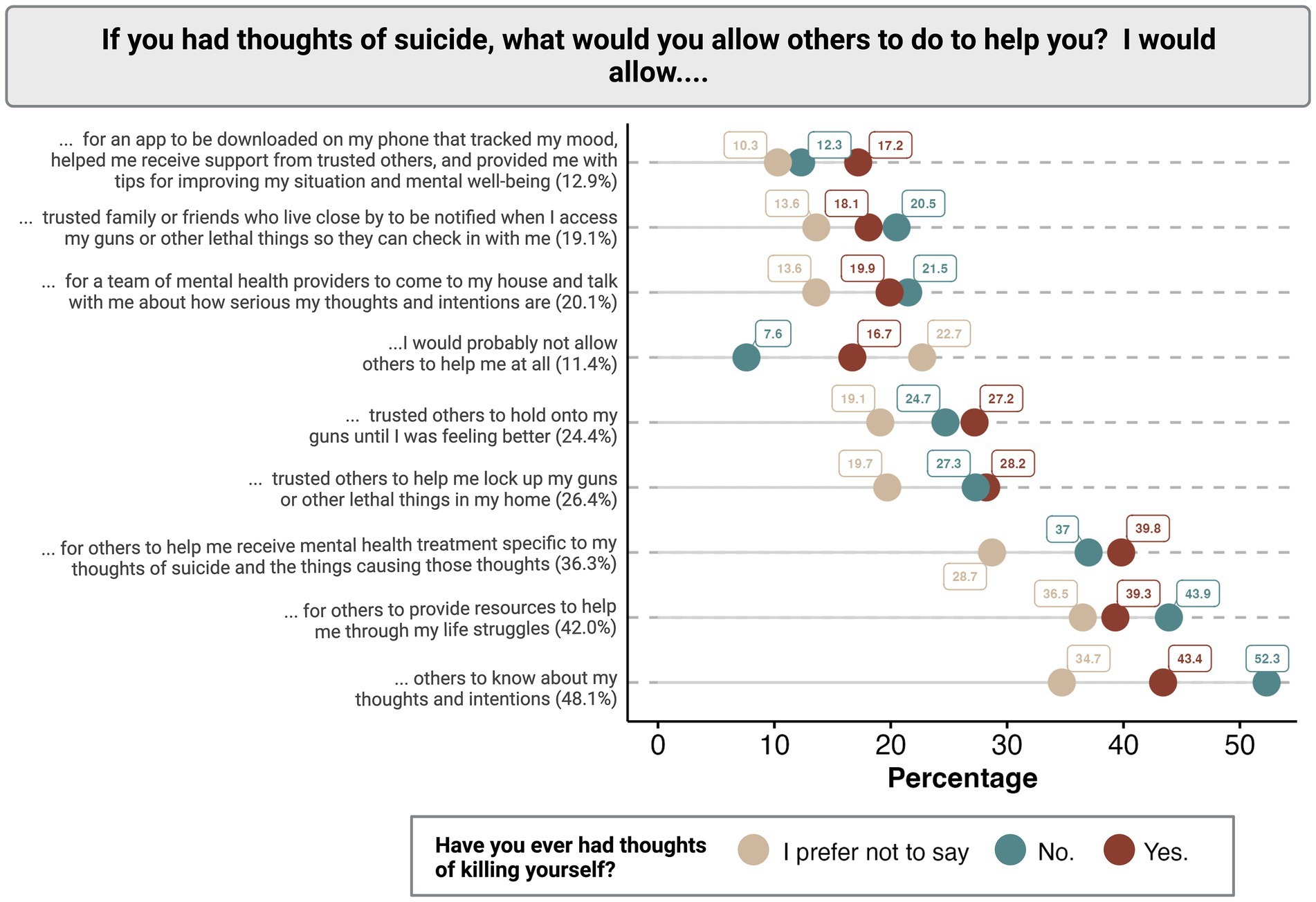Despite the investment of public resources to fight staggering suicide rates among veterans, we know little about how veterans and service members in crisis communicate suicidal ideations, and what interventions they are willing to receive. We aim to identify communication and suicide intervention preferences of veterans and service members in times of crisis. Descriptive statistics were used to explore veterans communication of suicidal ideations. While 89.9% of participants indicated they were willing to speak to someone when having thoughts of suicide, less than 26% of participants indicated they were willing to bring up their thoughts with a crisis line or veterans organization. Rather, they indicate that family members (62.2%) and military friends (51.1%) would be their primary outreach. Logistic regression was used to determine whether or not preferred interventions varied by participant demographic characteristics. While the majority of participants indicated they were willing to allow intervention (88.6%), no one method was accepted by the majority of the population. The most accepted means of communication was to proactively contact a friend or family member about general life struggles (32.6%) or suicide-specific concerns (27.5%). Many participants were open to receiving resources (42.0%), suicide-specific mental health treatment (36.3%), and some sort of lethal means safety intervention (19.1%–26.4%). The age, marital status, and veterans status of participants significantly impacted what interventions they were willing to allow. We discuss the implications of these findings and the need for evidence-based, multimodal interventions in order to assist veterans in need.
Some highlights of the project are found below and the full article can be found here.



For a table summary of logistic regression analysis and all other supplemental data, please visit Frontiers in Public Health.
Suggested citation: Beatty AE, Richardson J, Batten SV, Weintraub S, Hogan K, & Hotle K. 2023. Front. Public Health - Public Mental Health. doi: 10.3389/fpubh.2023.1215925. Retrieved Month Date, Year from www.stopsoldiersuicide.org/research.